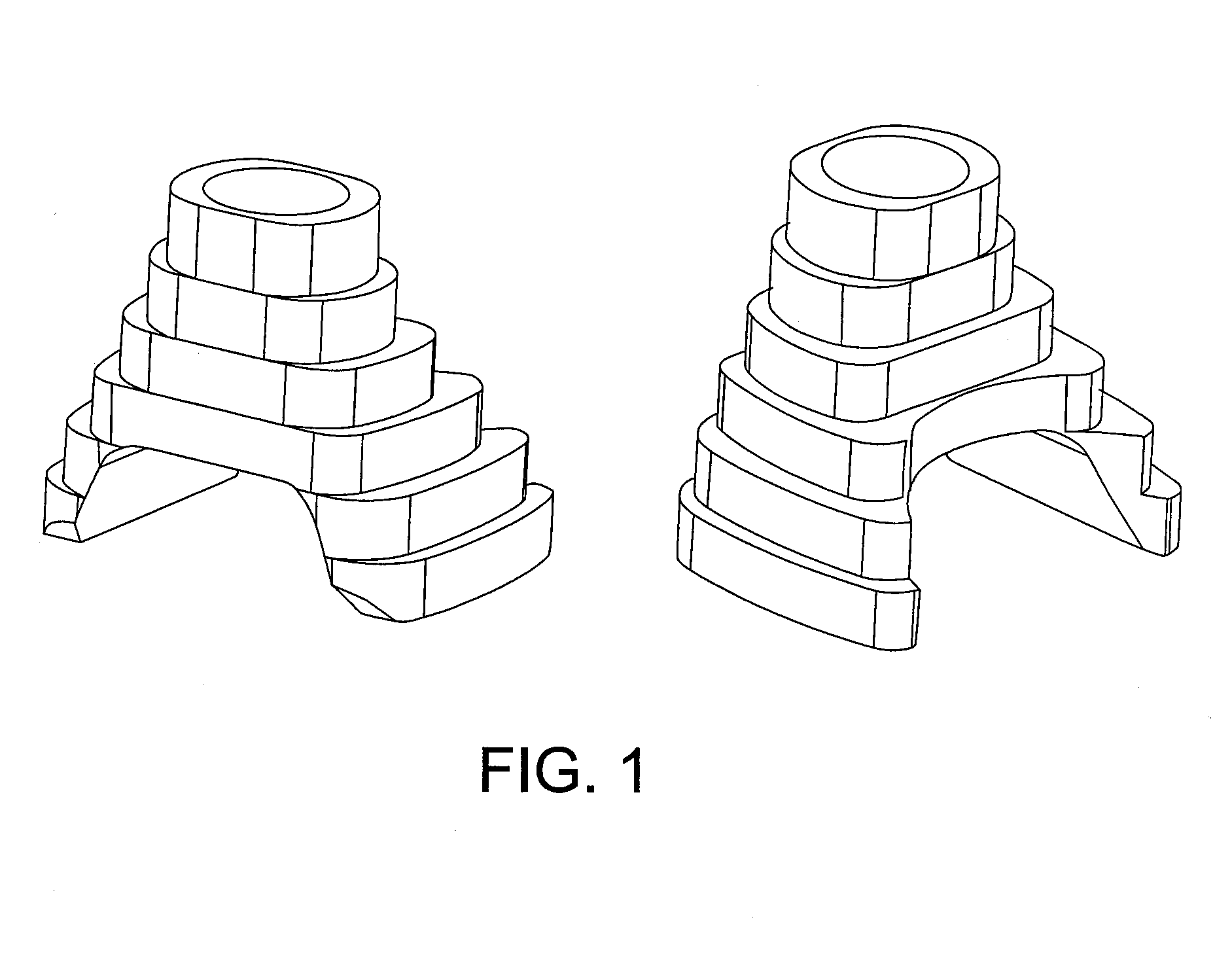Porous Titanium Femoral Sleeves and Their Use in Revision Knee Surgery
a technology of porous titanium and femoral sleeves, which is applied in the field of porous titanium femoral sleeves and their use in knee surgery, can solve the problems of deterioration of bone quality in proximity to implanted knee replacement devices, and tibia and femoral bone defects are often encountered on both sides of the tibia and the femur, and achieves the effect of increasing strength
- Summary
- Abstract
- Description
- Claims
- Application Information
AI Technical Summary
Benefits of technology
Problems solved by technology
Method used
Image
Examples
example 1
[0077]A rubber mold is created with a void approximately the shape of the femoral sleeve. A titanium powder / salt powder mixture is placed into the mold. A metal mandrel is placed into the mold and power mixture creating the interior channel of the sleeve. The mold and mandrel assembly is then placed into the isostatic press and compacted into solid form. The solid form is machined to form the final exterior terrace profile. The solid form is immersed in reverse osmosis water to remove the major portion of salt. The taper adapter is press-fit into sleeve. The entire assembly is sintered and entire part shrinks by approximately 13%.
example 2
[0078]Example 1 is performed using commercial pure titanium powder (Phelly Materials, Inc. Bergenfield, N.J., USA) particle size: 45-75 μm and NaCl (Fisher Scientific International Inc. Hampton, N.H., USA) particle size: 250-425 μm. The titanium and salt are mixed in a ratio of approximately 25:75 Ti:PFA by volume. The mixture is added to a mold and compressed into a green body at a compaction pressure of 22 ksi.
[0079]The green body is placed in a water bath until the NaCl dissolved. The resulting metal skeleton is dried at 65° C. for 4 hours, and then sintered at 1204° C. for 2 hrs. A highly porous femoral sleeve results.
example 3
[0080]The femoral sleeve from Example 2 is joined to a femoral component by attaching the femoral sleeve to the femoral component through a morse taper between the femoral component boss and the taper adapter internal channel.
PUM
| Property | Measurement | Unit |
|---|---|---|
| porosity | aaaaa | aaaaa |
| porosity | aaaaa | aaaaa |
| distance | aaaaa | aaaaa |
Abstract
Description
Claims
Application Information
 Login to View More
Login to View More - R&D
- Intellectual Property
- Life Sciences
- Materials
- Tech Scout
- Unparalleled Data Quality
- Higher Quality Content
- 60% Fewer Hallucinations
Browse by: Latest US Patents, China's latest patents, Technical Efficacy Thesaurus, Application Domain, Technology Topic, Popular Technical Reports.
© 2025 PatSnap. All rights reserved.Legal|Privacy policy|Modern Slavery Act Transparency Statement|Sitemap|About US| Contact US: help@patsnap.com



